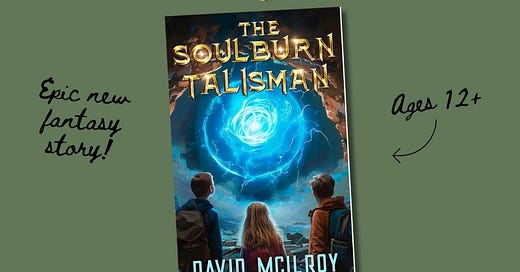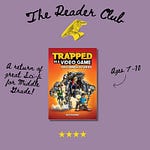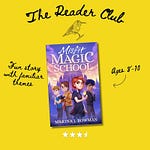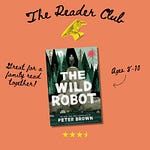Intro to Book
Hello Readers,
What’s one of your favorite things to do? One of mine has always been hiking. I love it, especially in tall green mountains in the late spring or late fall here in California. It is beautiful, to say the least. Breathing in the crisp, clean air. Cool from the breeze that gently graces the mountainside, overlooking the San Bernardino Valley down below. It looks far more peaceful from up here than I know it actually to be. Birds chirping and flitting about, even the bugs don’t bother me as much as they do in my hometown. I can simply watch and be in nature with them. But in winter, the mountain is a-whole-nother beast. Fog sets in and it’s hard to navigate where you’re going. If it snows, it’s even worse. I remember reading Dracula in my room one day while living in the mountains and without realizing it, fog had covered up the camp I was working in. When I walked outside, the camp was dreary. I felt Dracula creeping up on me (not literally but I did have to keep my mind from panicking) . Especially since there was nobody around because everyone was in the mess hall at that time. It remains a core memory from that time nearly fifteen years ago. And it was just dredged up by the book I’m reviewing today.
Today I’m reviewing The Soulsburn Talisman by David McIlroy, a fellow YA author whom I recently found on Substack. Now, the book isn’t all about mountains mind you, but the story starts similar to that core memory of mine, and the imagery was pointed I couldn’t help but be brought back to that time. Not unpleasantly either. There is sometimes something pleasant in the creepy, and I don’t know why that is. But the book isn’t creepy the whole time either. What the book is, is an epic YA fantasy story, wonderfully depicting a fantastic and original world with a story that kept me glued to the pages. I was reminded of several of my favorite authors, particularly Ursala K. Le Guin, Diana Wynn Jones,
Summary
As previously mentioned, the story begins on a mountain in the fog, with a girl who can’t remember her name. Pretty quickly memories begin to come back as she fights to remember what happened. Then something attacks her, she is rescued and brought to a portal that takes her to a new land. But she is not the only one who is rescued, a fellow classmate of hers is as well, as they see something take yet another classmate in the fog.
The new land is filled with wonder and the girl and her classmate must soon come to terms with where they are, running the things coming after them from the fog, and how to get home, which includes a colorful cast of types of creatures, heroes, and villains. Where the backstory of the world, the way the different peoples interact with one another, and the growing tension between them makes the book enthralling to read.
Characters
This is a YA book, so there are a lot of Characters, but four main Characters so we’ll stick to those.
First, we have Brooke:
She is a thirteen-year-old girl from England who was on a class field/camping trip. She’s a bookworm, naturally inquisitive, and insightful. She is also passionate and gung ho, getting things done.
Next, we have Dale:
He is a thirteen-year-old boy, also from England, also on a class field trip. He’s shy and timid. Often scared to go on an adventure, wouldn’t dare challenge the authority or directive, and questions everything. He’s an endearing person, but the opposite of Brooke.
Then we have Charlie:
He’s a rough-and-tumble type. Also thirteen, also from England, also on the class trip but unlike the other two kind of hates it. He doesn’t mind getting dirty or into scraps and is seen by Dale as a bit of a bully. But he’s also a homebody who would rather not go on an adventure. He reminds me of the stereotypical jock mixed with the stereotypical gamer.
Last, we have Willow:
I don’t know her age. It’s vague, she’s not from England, not on a class field trip, and is quite different from the teenagers, but spends much of her time with them in the story classifying her as a main character.
There are a lot of characters in this story, none of them are human…exactly…except the teens from England. Each was bustling with colorful personalities that I fell in love with, well…except the villains. But even then, they were good villains. True villains. I should make an episode about what I believe makes a good or true villain. But for now, know that is my opinion.
Analysis
This book was amazing. As much as I enjoyed The Cruel Prince which at the end I couldn’t recommend, I enjoyed this book much more and can easily recommend it. This is a 5-star book in my opinion. It had great characters, and an epic plot, and leaves me wanting more of the story. Like please, David McIlroy, if you’re not writing a second, please consider it. I would put this tale at 12+ but a mature 10-year-old could read it easily enough and I would say it is clean, except for one instance in which (spoiler alert) it says a curse word. Just one if my memory serves me right. McIlroy is from the UK, and I don’t know what the use of the word is there but it does happen here once. However, the character wasn’t wrong when they said it. Despite the one word, I would let my daughter read this story with no problem.
Major Themes:
Okay, so the biggest major themes are about friendship and teamwork. There’s a real element to the story about sticking to friends in hard times and working together to solve problems. This goes beyond just the main characters too. The whole of the fantastic land seems to work on this premise. It doesn’t mean that the world is perfect, far from it, but there is an aspect that the world itself focuses on these things. The only other main theme would be the juxtaposition of good and evil. In this story, evil is dark and yet, it is also alluring. And almost like real life, it is hard to discern the difference between the two for the teens. The ability to discern it is focused on quite a bit in the book.
Writing Style:
The writing style is mature and appealing. It is not very difficult, but the concepts can be. Especially distinguishing the difference between right and wrong. But the imaginative world is playful and creative, and the descriptions take the characters all over the map of that world. I needed to refer back to the map (Thank you, Mr. McIlroy, for including it!) to see the areas and ways they were traveling. But other than that it was easy reading. I think I read it in two days, and about six hours of reading.
Plot:
The plot is complex, shifting between different points of view throughout the story. There is a prologue, which does not connect immediately to the story. With these things, it does push the age rating up just a bit, but I still believe the avid reader of ten years of age or older could easily handle the shifts, and traveling. Again, my daughter could pick up this book and read it, and I think she would honestly thoroughly enjoy it.
Gospel Connections:
I’m not sure if David McIlroy is Christian, but there are a bunch of Gospel connections in this book. The evil, villainous characters in this book operated much like the Bible describes Satan and demons to operate. They look and seem good when in reality they are not, and you see the struggle of the characters to sift through the right and wrong choices. Much like we struggle with in real life, and we struggle to see the lies of the enemy and the truth of the Gospel. Sometimes, the wrong thing seems right in the moment. Sometimes the lies confuse us, and this is how evil works in this world too.
There is also a savior-like element to this story, but that’s all I’m really saying about it. Going too much into that arc would be a spoiler, but let’s say I’m interested to see where McIlroy goes with this arc.
Finally, there is a religious-like order in the book. It seems some question the order, and some intrinsically trust the order. And all rely on the order to keep the darkness at bay. It is like the church. Particularly how the church and its elders and leaders can be a representation of a group that offers the light and truth. Even though some may question the church’s motives, those who know the church to be a light in the world trust it and bless it.
Social Impact:
So many elements to discuss here too. I think one thing socially is the view of the church in the world. Again, not sure if this was Mr. McIlroy’s intention, but it is something we can see in the book. Another social impact is how we view our friends, and how we need to rely on them and support them. And how someone who we saw as an enemy, in the right circumstance can become a friend. We can see forgiveness reshaping our hearts, and accepting others for their differences instead of shunning them.
Then, many political factions have to work together. We see them negotiating, and working together. We also see tensions between them. And yet they are all connected, even to those who seem to be working against them. It is very interesting to see how they all interact.
Final Thoughts
Okay, as I said, this is a 5-star book. I absolutely loved it and recommend you pick it up. It has a lot of great conversational pieces for discussion with your teenage reader, and has great topics for them to think about. It's clean and enjoyable for any reader, having throwback vibes to classic fantasy authors such as Le Guin and Wynn Jones. Beyond that, there are so many lovable, and endearing characters whose stories you’ll want to read more about once the book ends. I for one, can’t wait for a sequel.
Until next time, have a good read.













Share this post